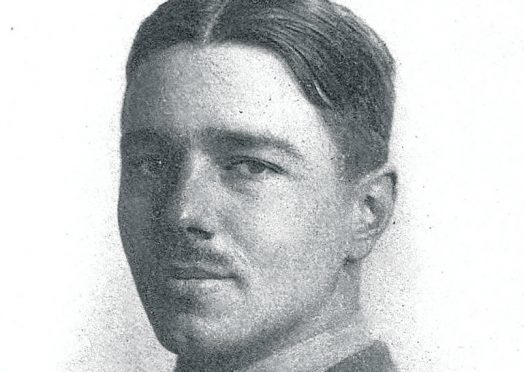An Aberdeen university academic has shed new light on the north-east’s role developing the pioneering technique used to treat war poet Wilfred Owen in hospital.
Owen was sent to Craiglockhart War Hospital in Edinburgh in June 1917 after he was trapped in a trench for several days after coming under heavy fire in France.
The 24-year-old Manchester Regiment lieutenant required treatment for shell shock, staying for four months and teaching English classes at a nearby school.
It was there that he wrote two of his most powerful First World War poems – Dulce Et Decorum Est & Anthem for Doomed Youth.
Shell shock was a relatively new phrase first coined by soldiers themselves.
A lot of the thinking surrounding it was influenced by Aberdeen doctor, Dr John Collie – whose early work supported railway companies fighting compensation claims from people injured in accidents.
Medics at Craiglockhart Hospital started using different treatment methods and one of these techniques is associated with Ballater-born academic, Professor Patrick Geddes.
Before the outbreak of the war, Mr Geddes had been writing to Dr Arthur Brock at Craiglockhart on a regular basis.
The two men exchanged many letters, but one written in 1910 provided Brock with a eureka moment.
It was at this stage that he realised that physical activity could be used to treat a medical condition and this technique, known as ergotherapy, was used to treat Owen during his time in Scotland.
Dr Neil McLennan from Aberdeen University said: “It is my view that if it was not for the Aberdeenshire born Patrick Geddes then Owen’s poetry would not have been written.
“There are three strong links between Aberdeen and the Anthem for Doomed Youth poet.
“Owen’s poetry is read every year about this time as part of Remembrance events.
“However few will know that the poet and his work can be so strongly connected to Aberdeenshire.”
Owen recovered and returned to the trenches, but was killed in action at the age of 25 as he led his men over the Sambre–Oise Canal in France, just a week before Armistice was declared.
Dr Arthur Brock, the medic who treated Owen during his time in Edinburgh, had another medical connection with the north-east.
His brother Sydney, who joined the Royal Scots 10th RS Cyclist Battalion, was sent to Aberdeen to recover after Sir Henry Gray from Aberdeen University developed expertise on compound fractures and blood loss.
He died at a city hospital of gunshot wounds and septicaemia on November, 11 1918.
